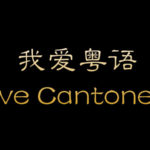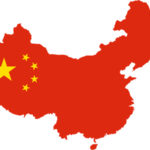In the early years of the Republic of China, intellectuals of the New Culture Movement, such as Hu Shi and Chen Duxiu, successfully campaigned for the replacement of Literary Chinese as the written standard by written vernacular Chinese, which was based on northern dialects. A parallel priority was the definition of a standard national language (simplified Chinese: 国语; traditional Chinese: 國語; pinyin: Guó yǔ). After much dispute between proponents of northern and southern dialects and an abortive attempt at an artificial pronunciation, the National Language Unification Commission finally settled on the Beijing dialect in 1932. The People’s Republic, founded in 1949, retained this standard, calling it pǔtōnghuà (simplified Chinese: 普通话; traditional Chinese: 普通話).Some 54% of speakers of Mandarin varieties could understand the standard language in the early 1950s, rising to 91% in 1984. Nationally, the proportion understanding the standard rose from 41% to 90% over the same period.
The national language is now used in education, the media and formal occasions in both the PRC but not in Hong Kong and Macau. This standard can now be spoken intelligibly by most younger people in Mainland China and Taiwan with various regional accents. In Hong Kong and Macau, because of their colonial and linguistic history, the sole language of education, the media, formal speech and everyday life remains the local Cantonese, although the language is now common and taught in many schools,but still hasn’t gained ground. In Mandarin-speaking areas such as Sichuan and Chongqing, the local dialect is the native tongue of most of the population.[clarification needed] The era of mass education in Standard Chinese has not erased these regional differences, and people may be either diglossic or speak the standard language with a notable accent.
From an official point of view, the PRC governments maintain their own forms of the standard under different names. Technically, both Pǔtōnghuà and Guóyǔ base their phonology on the Beijing accent, though Pǔtōnghuà also takes some elements from other sources. Comparison of dictionaries produced in the two areas will show that there are few substantial differences. However, both versions of “school-standard” Chinese are often quite different from the Mandarin varieties that are spoken in accordance with regional habits, and neither is wholly identical to the Beijing dialect. Pǔtōnghuà and Guóyǔ also have some differences from the Beijing dialect in vocabulary, grammar, and pragmatics.
The written forms of Standard Chinese are also essentially equivalent, although simplified characters are used in China, Singapore and Malaysia, while people in Hong Kong, Macau and Taiwan generally use traditional characters.
via:wikipia
=========================================================
Learn native Chinese with Chinlingo, Easy and Fun with us
Click here to win free trial lesson
Contact us: Facebook: chinlingo
Wechat:lovechinlingo; lovechinlingo2
Email: public@chinlingo.com





 闽公网安备 35020302035673号
闽公网安备 35020302035673号
0 responses on "Standard Mandarin"